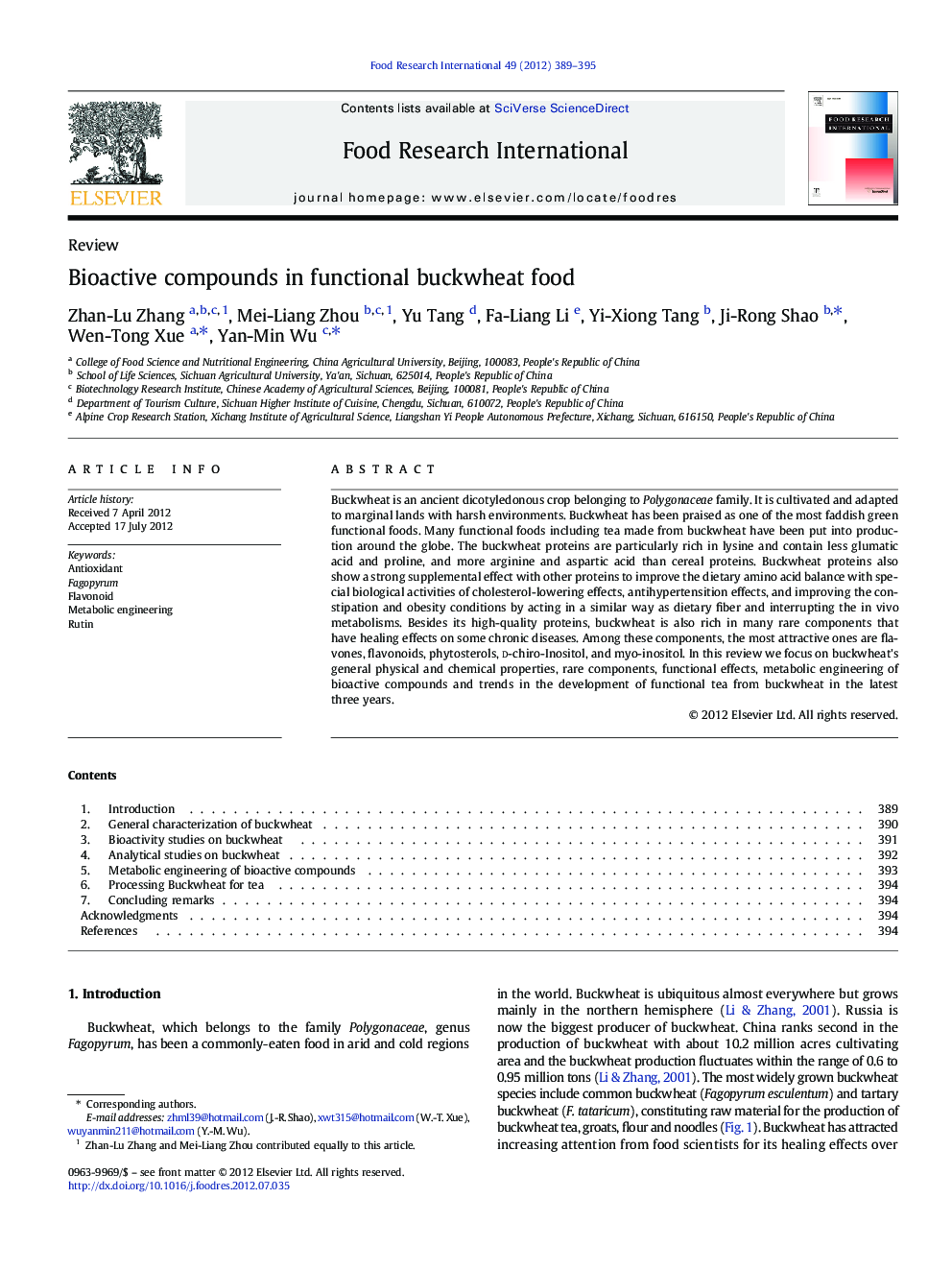| Article ID | Journal | Published Year | Pages | File Type |
|---|---|---|---|---|
| 6399124 | Food Research International | 2012 | 7 Pages |
Buckwheat is an ancient dicotyledonous crop belonging to Polygonaceae family. It is cultivated and adapted to marginal lands with harsh environments. Buckwheat has been praised as one of the most faddish green functional foods. Many functional foods including tea made from buckwheat have been put into production around the globe. The buckwheat proteins are particularly rich in lysine and contain less glumatic acid and proline, and more arginine and aspartic acid than cereal proteins. Buckwheat proteins also show a strong supplemental effect with other proteins to improve the dietary amino acid balance with special biological activities of cholesterol-lowering effects, antihypertensition effects, and improving the constipation and obesity conditions by acting in a similar way as dietary fiber and interrupting the in vivo metabolisms. Besides its high-quality proteins, buckwheat is also rich in many rare components that have healing effects on some chronic diseases. Among these components, the most attractive ones are flavones, flavonoids, phytosterols, d-chiro-Inositol, and myo-inositol. In this review we focus on buckwheat's general physical and chemical properties, rare components, functional effects, metabolic engineering of bioactive compounds and trends in the development of functional tea from buckwheat in the latest three years.
⺠Buckwheat is an annual herbaceous plant with origins in China and Central Asia. ⺠The amino acids in buckwheat protein are well balanced and rich. ⺠Buckwheat is the only pseudocereal that contains rutin. ⺠HPLC and CE are two head techniques for determination of flavonoids.
